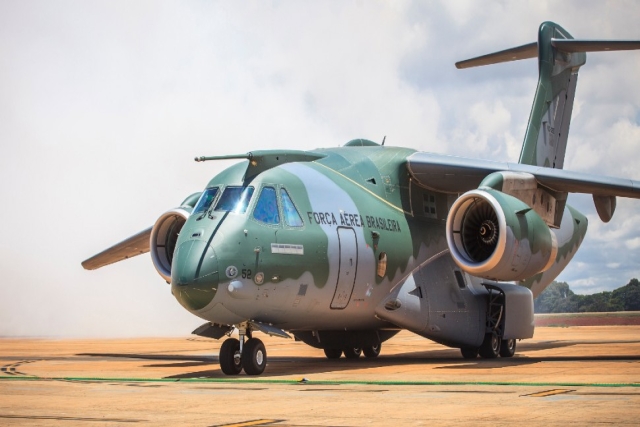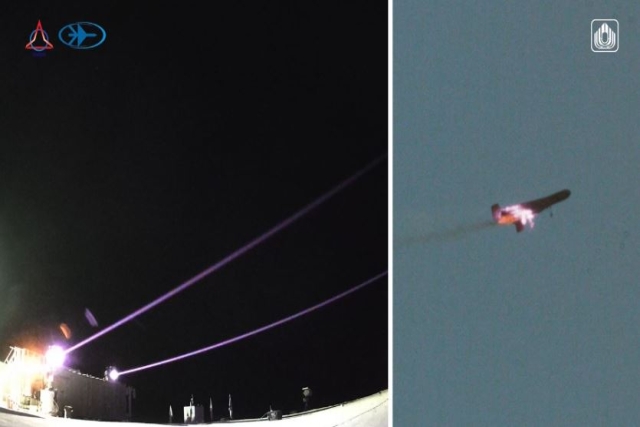U.S. F-35B Damaged as Cannon Shell Explodes Upon Launch

The fuselage of an F-35B fighter operated by the U.S. Marine Corps was damaged after an ammunition round it released exploded.
On March 12, a jet attached to VMX-1, the Marines' Yuma-based test and evaluation squadron was conducting a nighttime close air support mission. It was then that a PGU-32/U Semi-Armor Piercing High Explosive Incendiary-Tracer (SAPHEI-T) 25mm round exploded after leaving the fighter's cannon, Marine Corps spokesman Capt. Andrew Wood confirmed to Military.com on Tuesday.
It is not clear if the round was fired deliberately.
“The mishap did not result in any injury to personnel, and an investigation of the incident is currently taking place," Wood said in an email.
Although the Naval Safety Center said that the aircraft landed safely, it categorized the accident as Class A, the most severe level in the military’s mishap scale. For aviation accidents, Class A mishaps are defined as those resulting in at least $2.5 million in property damage, or the total loss of the aircraft, or one or more individuals being killed or permanently disabled.
A 25mm GAU-22 Galting gun is only mounted in an external gun pod under the F-35 jet's fuselage on the Marines' F-35B and Navy's C-variant. The Air Force’s A-variant carries the gun internally. With a capacity of 220 rounds, the 25mm gun pod can fire at a rate of up to 3,300 rounds per minute.

The first live-fire tests of the gun pod took place in 2016. Despite concerns about the accuracy of the weapon in the past, it has since been cleared for at least some level of operational use, notably being fitted to Marine F-35Bs supporting the withdrawal of U.S. forces from Somalia between December 2020 and January 2021, The Drive wrote.
Military.com reported that the particular type of round that blew up underneath the F-35B in this incident was a PGU-32/B SAPHEI-T type. In 2019, Marines evaluated the SAPHEI-T 25mm rounds in the same tests that marked the first-ever shipboard hot reloads in the Indo-Pacific region.
General Dynamics Ordnance and Tactical Systems (GD-OTS), which, among other contractors, makes PGU-32/B ammunition, says on its website that these rounds have "inherent delay function for improved terminal effectiveness" and "improved graze sensitivity." What this means is that the fuze in these rounds are designed to give the projectiles time to penetrate through some amount of armor or other "barriers" before detonating, for maximum effect, while the fuzes themselves are constructed in such a way to help ensure they go off even when they only glance a target, rather than hit it directly. An early detonation of the projectile, like what happened earlier this month, could point to a malfunction of some kind with the fuze.












